If you buy something through a link in our posts, we may get a small share of the sale.
Also known as rice wine, sake originates from Japan and has a strong alcoholic flavor. If you fail to use the right procedure when making sake, fermentation will be slow and this will result in less flavorful sake. It’s a difficult process, and not everyone can learn how to make sake and get it right.
Contents
How to Make Sake
Once you learn how to make sake, you can avoid mistakes like these and become one of the selected few who know how to properly make this beverage. First, you will need to equip yourself with the right ingredients and equipment to make sake.

Ingredients
The most important step is to assemble the required ingredients in the right quantities when making sake. Below is a list of ingredients you will need:
- 10 pounds of rice: Unlike beer brewing which uses hops or malted barley as the main ingredient, sake uses rice as the main ingredient. Although any kind of rice can be used for preparing sake, I recommend using polished rice if you want to prepare sake with a clear appearance, good taste and pleasant fragrance. Typically, the more the brewing rice is polished, the more suitable it becomes for brewing.
- A pinch of Epsom salts (optional): The Epsom salt is not a must use but I recommend using it to add magnesium and sulfate ions to the brewing water.
- 2 gallons of cold water, make sure you use clean, chlorine-free, and good tasting water: Instead of using tap water that might have been chlorinated during treatment, I recommend using rainwater as it is untreated and chlorine-free.
- 0.75 tablespoon of yeast nutrient (optional) to ensure a healthy fermentation.
- 1.25 teaspoon of Morton salt substitute (optional)
- 1 packet of sake yeast to break down sugar during the fermentation process.
- 40 ounces of koji kin: Koji kin is a member of the koji molds and mold spores. It helps in converting rice starch to sugar.
- Citric acid (optional): Although the yeast used for brewing sake generates 4 acid blend types, including malic acid, citric acid, succinic acid and lactic acid, lactic acid is always in larger quantities than the rest. This makes the taste of sake to be more creamy like milk or cheese. If you want the taste of sake to be refreshing and crispy especially if you want to drink it chilled in glasses, I recommend adding some citric acid.
A small amount of rice is mixed with koji spores, ensuring that yeast interacts with rice sugar. Although the koji kin is difficult to find, it helps convert starch to sugar which interacts easily with yeast.
If you don’t have access to the highly recommended sake yeast, you can also use the regular beer yeast or the white wine yeast as a substitute, make sure to properly wash it. The Epsom salt, yeast nutrients, and salt substitute help speed up the fermentation process, giving your sake a mouth-watering taste.
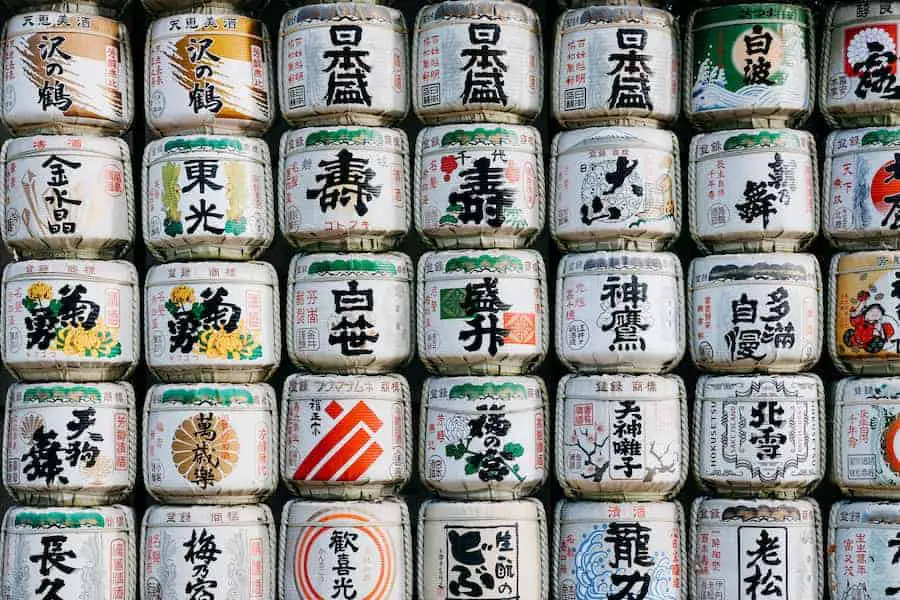
Equipment
To prepare your sake, you will require the following pieces of equipment:
- Gallon glass jugs or jars: You should have at least four as they are used as clarifying vessels and are essential during secondary fermentation.
- Homebrewing kit: with one-hole stoppers, racking cane, plastic bucket fermenter, vinyl tubing, and airlocks.
- Nylon straining bag: You will need a nylon straining bag when you will be pressing the rice with your hands.
- Steamer: Use the commonly used bamboo steamers lined with cheesecloth for steaming rice.
You will require other equipment when making sake, but these can be readily found in the house. They include:
- Bowls: Used when washing, rinsing, and soaking the rice.
- A thermometer: Make sure it has a range of 40 -160 degrees Fahrenheit.
- Measuring spoons and cups.
- Pan or double boiler: Put in the bottle of sake for pasteurization.
- A long-handled spoon: Useful when stirring moromi and moto. Moromi is the mash for sake fermentation, which is a mixture of yeast, water, rice-koji and rice. Moto is the second phase sake making phase before moromi which is in the third phase.
- A set of vessels: Used to put in the final sake, but you will need to make sure they can be sealed.
- Hygrometer and Glass (optional): To measure the actual gravity of the sake.
You should thoroughly clean and sanitize the above equipment as any contamination can affect yeast production during the process of fermentation.
Instructions
Sake brewing is a complex task that needs patience as it involves different significant steps. These steps can take around six weeks.

Moto
In this step, the traditional way of creating a starter for sake depends on lactobacillus bacteria. These bacteria acidify the mash. Later on, you should consider pasteurization to safeguard the sake from getting spoiled. You can pasteurize it by passing it through a coiled metal pipe that is surrounded by hot water and moving it into a reservoir.
If you don’t have the modern equipment to do that, you can put it in a clean container and then immerse it in hot water. Pasteurization will be complete after heating the sake in hot water of around 150 degrees Fahrenheit for about 30 minutes. You can then cool it down to the normal temperature after pasteurization.
In this yeast starter stage, the lactobacillus bacteria are produced to acidify the mixture. The required ingredients include rice, koji, water, and yeast in this stage. Below is the moto procedure you should follow when making your sake:
- In a container, add 2.5 cups of cold water, a pinch of Epsom salt, and 0.75 tsp of yeast nutrient, and then stir until they’re fully dissolved.
- Add 0.5 cup of koji. Cover the container and store the mixture in the fridge overnight.
- Rinse one and a half cups of rice and soak in 3 inches of water. Put it in the refrigerator next to the koji mixture and soak it overnight.
- Drain and steam your soaked rice in a bamboo steamer lined with cheesecloth the following day.
- Once you’re done with steaming, heat it in the pan and mix the hot rice with the chilled water and koji mixture in a clean fermenter. Clean your hands and use them to mix the ingredients. Ensure you break down all the rice clumps.
- The mixtures’ temperature will fall to a range of 75 to 80 degrees Fahrenheit. Store the koji rice mixture at a room temperature of 70 degrees Fahrenheit for two days, stir the mixture twice a day with a clean spoon. Over 48 hours, the koji rice mixture will fully liquify.
- Once the two days are over, for 12 hours, allow the koji rice mixture to cool down to 50 degrees Fahrenheit.
- After 12 hours, place it back to 70 degrees Fahrenheit to ensure a quick starter’s fermentation. To ensure there is no production of wild yeast, you may add citric acid.
- Stir the mash with a sanitized spoon two times a day for the next three days. Afterward, stir it once a day for another three days.
- Within nine days, the essential moto fermentation should be complete. Again, lower the temperature to 50 degrees Fahrenheit.
- Allow the moto to rest for five days, after which it becomes ready for the moromi stage.
The fermentation temperature of your sake is another critical thing to consider. Ensure you store it under room temperatures and not in cold or hot temperatures or where sunlight can reach it.
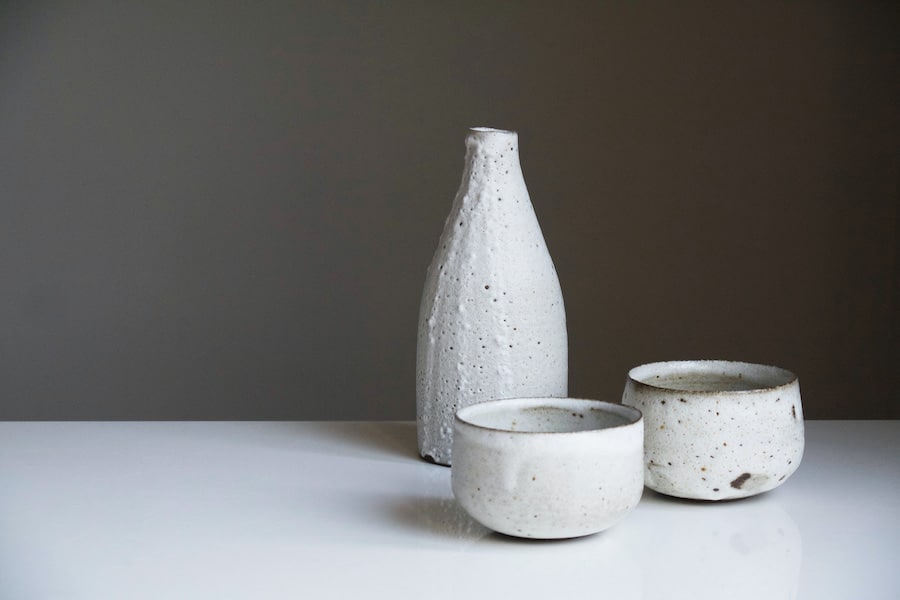
Moromi Mash
Primary fermentation in the moromi step takes place for four days in three sub-steps. Keep in mind that the total amount of mash gets doubled in each stage.
Water, rice, and koji should not be added at once but gradually three times a day within the four days to ensure a complete fermentation process. Below are the three sub-steps and the procedure to follow in each:
Hatsuzoe
The initial addition of water koji and rice:
- Rinse 2.5 cups of rice, cover it with three inches of water, and allow it to soak for 12 hours before steaming it. Meanwhile, mix one cup of koji into the initially prepared moto.
- After 12 hours are over, steam the rice for this addition. As the rice steam, dissolve 1.25 teaspoons of Morton salt substitute in some water to end up with a total of 2.75 cups of the mixture and sufficient cold water.
- Put the mixture in the refrigerator to chill until the rice is steaming.
- After the rice has finished steaming, heat it in the pan and mix it with the chilled water. Using your clean hands, ensure all the forming rice clumps are broken up.
- Mix it with the moto when the rice temperature cools to below 85 degrees Fahrenheit.
- The temperature of the moromi mash should cool down to a range of 70 to 74 degrees Fahrenheit.
- Make sure you maintain the mash at room temperature.
- For the next 12 hours, stir the mash after every 2 hours and afterward two times a day for the next 36 hours.
Nakazoe
This is the second addition of rice, koji, and water. Here is the procedure you should follow:
- After starting the hatsuzoe sub-step, clean and soak 6 cups of rice for steaming, meanwhile, add and stir 1.5 cups of koji in the moromi mash.
- Steam the rice on the next day. Once the steamed rice is ready, add 8.75 cups of cold water to it. Mix it properly to ensure no rice clumps can be seen.
- After the mixture has cooled, add the rice to the moromi mash. Allow it to settle at room temperature for 12 hours.
Tomezoe
This final sub-step of the moromi, water, koji, and rice are added. Below is the procedure:
- As you allow the mash to rest, rinse and soak all the remaining rice for the final addition.
- Drain and steam the rice on the following day.
- Once the 12 hours of the moromi are over, stir in all the remaining koji.
- Add 1 gallon and 1 cup of cold water to the steamed rice and mix them well. Again, ensure there are no rice clumps.
- Add the mixture to the moromi mash and allow it to rest overnight.
- Store the fermenter at a temperature of 50 degrees Fahrenheit.
- Leave it to ferment undisturbed for three weeks, following procedures.
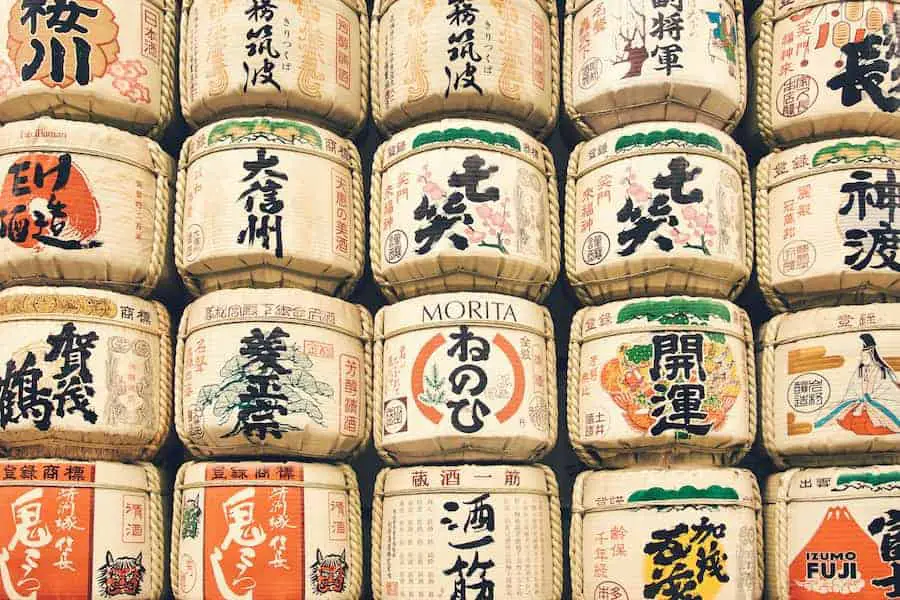
Yodan
This is the phase where you will separate the cloudy sake (nigorizake) from the rice. You will need to observe the specific gravity as the end of the three weeks nears. Keep in mind that the gravity must be below 1000 before you start separating the sake from the kasu (rice lees).
Once the gravity is below 1000, do the following:
- Start siphoning the cloudy sake into a clean glass jar until there is no more liquid left.
- In case there are clogs, you can consider using a nylon straining bag.
- Use a fruit press or your hands to squeeze out the cloudy sake.
You should not worry much about aeration at this stage as there is still some active fermentation happening and will help clean things. However, you should try to keep splashing and sanitary to a minimum.
How to Prepare Sake-Making Koji
Koji is a Japanese fermentation starter made using a grain of rice inoculated with a specific type of mold known as aspergillus oryzae. Like yeast, koji Can help to kick-start fermentation in sake. Here is how you can prepare your koji for use in sake making.
- Start by soaking the rice for 3 to 6 hours and then rinse it until all the water drains.
- Steam the rice using a steam oven or a rice cooker. You must ensure that you don’t overcook the rice as it will stick together and make it hard to mix and inoculate with koji spores.
- Put a wire rack in the gastro tray of the steamer and then line with a muslin cloth sheet.
- Spread the washed rice evenly, and then place the tray in a bigger tray that is filled with boiling water.
- Cover the tray top with a cling film and then place the lid on top
- Put the tray on a steam oven and then steam for 1 and 1/2 hours at 100% steam setting on a complete fan.
- Remove the tray to allow the rice to cool, but ensure the cling film is still intact so that the rice doesn’t dry out during the cooling process.
- Once the rice is dried out, put it in an empty tray in an even layer, then sift over ⅔ with koji powder and then use a spatula to mix.
- Place the rice back to the muslin cloth and line with the steamer, and then spread it in an even layer.
- Put a damp cloth on the base of the tray, and ensure it doesn’t touch the base of the tray that contains the rice.
- Sift the koji mixture over the top of the rice and then drape a napkin on the surface and tightly secure it with a string to ensure the surface is taut.
- Seal the top by covering it with a lid, and then put it in the dehydrator for 5 to 7 days.
- Keep mixing the rice after every two days using sterilized utensils.
- In the end, the rice will have a layer of white mold that is one inch thick.
- This mold should smell floral and sweet, and it is the one you will be using to make your sake.
- You can store the koji in a freezer for around three months or let it dry out.
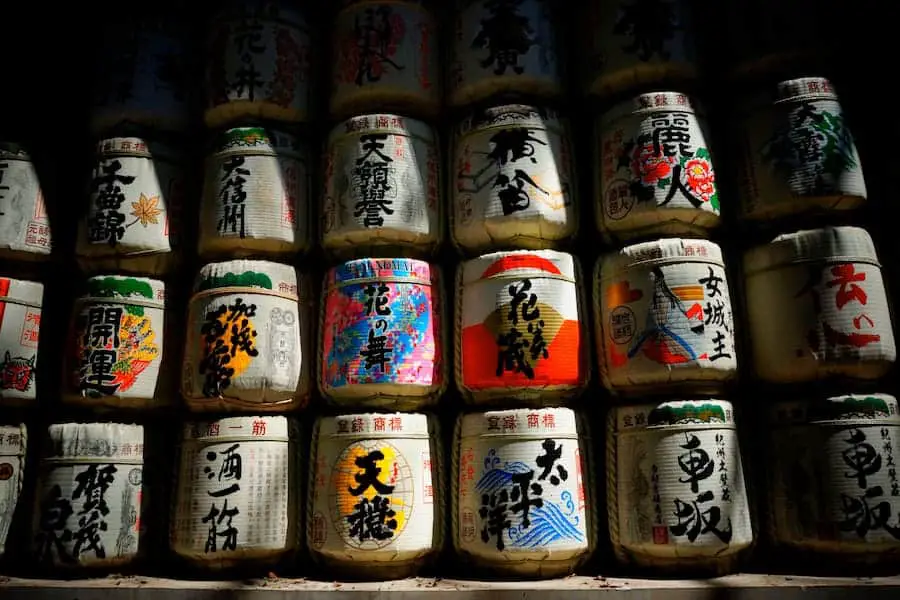
Maturing and Packaging
At this point, you should be having approximately 3 gallons of cloudy sake. Unlike beer which has an alcohol content of around 5%, the alcohol content of this milky white nigorizake should be ranging from 18% to 22%. If this is not the alcohol content you are looking for, you can dilute it by adding more water. In most cases, the alcohol content needs to be lowered from 18-22% to around 14-16%.
You can dilute it by adding around two parts of cold water to three parts of sake. You can use hot water to dilute it during winter or even float some ice cubes to generate the same diluting effect during summer.
Put airlocks and stoppers on the secondary fermenters and maintain a temperature of around 50 degrees Fahrenheit to provide an optimum environment for the secondary fermentation to finish.
After several weeks, you’ll start noticing the cloudy rice particles settling like sediment of fluffy white layer on the bottom of each glass jar. At this point, you can start siphoning the clear sake into a different sanitized jar.
Storing Sake
Once your sake is ready, it is advisable to store it in a dark place to prevent oxidation. Although it is safe to store it at a temperature at 59 degrees Fahrenheit, storing it in a refrigerator at a temperature of around 41 degrees Fahrenheit will prevent deterioration of taste.
Although unopened bottles of sake will have a shelf life of around 6 to 10 years and an opened bottle of sake will have a shelf life of around 1 to 2 years when stored in a refrigerator, I recommend consuming it within one year for optimal flavor.
What to Do in Case of a Pale Yellow Sake
Sometimes you might end up with a pale yellow sake that is not milky and not clear. Commercial producers use charcoal filters to make it brilliantly clear in most cases. On the other hand, homebrewers prefer bentonite, making the sake clear in several days. Here is how you can use bentonite to make a pale yellow sake clear:
- Add 1.5 tsp of bentonite into around 8 oz of hot water. (That is around a half teaspoon of bentonite per gallon)
- Gently whisk until you get a smooth mixture.
- Divide this mixture of bentonite into your jars and then shake gently.
- After around three days, the bentonite will have settled, and the pale yellow sake will have become clear.
Keep in mind that the acidic pH level of the concoction during the fermentation process was to keep the concoction from getting spoiled. That means that adding citric acid will make the sake sour or have some fruity flavors.

Stabilize the Sake
After adding finings into the sake, it is advisable to stabilize it by pasteurizing. Here is how to do it:
- Place the container with the sake into a large pot that can hold a water bath with the sake container in it.
- Fill the pot with lukewarm water to the jar’s shoulder containing the sake.
- Put a thermometer down the neck of the glass jar and then start heating the water.
- Remove the jar from the water once the temperature reaches 140 degrees Fahrenheit.
- Cap the pasteurized sake tightly, and then allow it to cool down before keeping it in a refrigerator.
The Type of Water to Use When Preparing Sake
When making sake, you should ensure that the water you are using is relatively soft. That means you should not use water that has iron in it. If the water is not soft, you can consider diluting it with or using deionized or distilled water.
You can then add the Morton salt substitute as a water hardener during the yeast mash. It is the only chemical available with a good concentration of the necessary water adjustment capability and nutrients for brewing sake.
This makes the water almost similar to the Japanese miyamizu, which contains monocalcium phosphate, tricalcium phosphate, fumaric acid, and potassium chloride. Remember that you can still add extra water during the Yodan stage to minimize the alcohol content if you want to match the average commercial level of around 15% to 16% ABV.
Cleaning and Sterilizing Equipment
The equipment used in any stage of sake making, whether it is fermentation, pressing, or bottling, needs to be cleaned and sterilized. Here are different sterilizing solutions you can use for your sake-making equipment.
Iodophor BTF
You can make your sterilizing solution by mixing around 6 ml of Iodophor BTF per gallon of water. At this concentration, the iodine is tasteless and odorless. Unlike chlorine bleach, this solution cannot damage the stainless steel equipment, and it doesn’t need to be rinsed.
At first, this solution is brown and takes around 2 to 5 minutes to work. The good thing is that you can reuse this solution. However, when it changes to yellow, you need to make a fresh one.
Chlorine Bleach
You can make your chlorine bleach sterilizing solution by mixing two tablespoons of chlorine bleach per gallon of clean water. Rinse your sake-making equipment in this solution, and give them sufficient time to drain before using them.
Although you can rinse with water, it is not compulsory as the low concentration of chlorine bleach will dissipate within a short time, and there will be no residue of flavor in the finished sake. However, the iodophor solution is still preferable for sterilizing sake-making equipment than chlorine bleach.
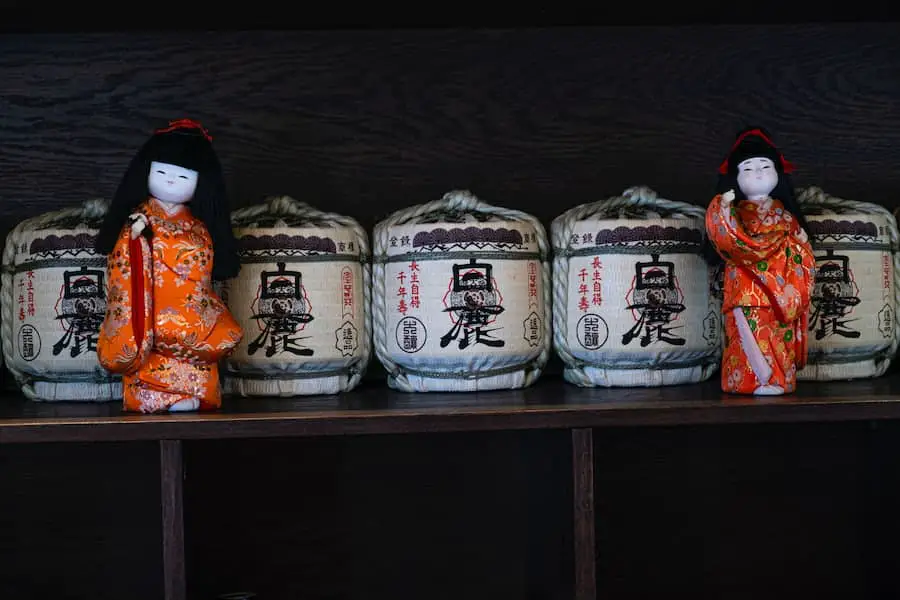
Frequently Asked Questions
What Makes Sake Cloudy?
Sake is unfiltered or roughly filtered, and so it contains rice sediment at the bottom, which makes it appear milky or cloudy. The milky sake is popularly known as nigori and has a creamy texture and a light, delicious taste that makes it popular.
For How Long Does Sake Last?
Once opened, it bears its mouth-watering taste for the first three days, although it can last for seven days.
It oxidizes gradually compared to other beers, and as a result, it becomes less tasty with time. Unopened sake can go up to one year from the date of manufacture, and if refrigerated, it can last for twenty-four months.
What Is the Average Alcohol Content In Sake Compared To Other Beers?
If you dilute sake by adding water before it is bottled, it contains an alcohol content of around 15%, but it ranges between 18%-20% if undiluted. Beers have an alcohol content of about 3%-9%, whereas wines have an ABV of around 9% – 16%.
What Is the Best Kind of Rice to Use When Making Sake?
There are many varieties of rice that can be used to make sake, but the best one is the medium and short grain variety, commonly known as japonica. Its kernel has a plump starch core, and is rather than the long grain rice variety. Typically, the richer and rounder the starch core of a rice kernel is, the better that variety of rice is for making sake.
Why Do I Need Polished Rice When Making Sake?
Polishing rice helps to remove the fat and protein from the rice, and remain with the starchy interior that is needed in brewing. Generally, all that is needed in sake making is the conversion of the starchy interior of rice into sugars.
This conversion process is known as saccharification. If you do not polish the rice to remove the fat and the protein, the resulting sake will have a different flavor. Fat and protein can also affect the brewing process.
Final Thoughts
Do you want to make your own sake? The above guide will help you know the steps to follow, the type of rice to use, and the following procedures. Remember to clean and sterilize the equipment you will be using in the various stages to prevent contamination.
If you’re not planning to consume your sake immediately, it is advisable to pasteurize and package it for storage.

